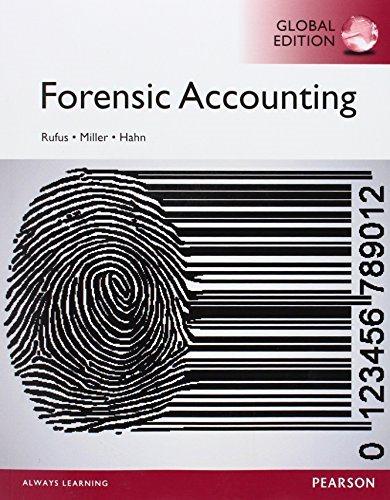12-84. Charles Choi was the owner/operator of a grocery store in California called Genes Modern Market. In
Question:
12-84. Charles Choi was the owner/operator of a grocery store in California called Gene’s Modern Market. In addition to the sale of normal grocery items, the store cashed payroll, personal, and third-party checks for a fee. The fee was 1% of the face amount of the check.
From 1991 to 1993, the store used two cash registers, but the cash register tapes were not used to make entries into the accounting system. Rather, all entries were made based on cash payments and receipts.
While monies were held in bank accounts, these accounts were not reconciled and the sales activity that Mr. Choi provided to the company’s accountant were lower than the amounts that appeared on daily cash register tapes. In addition, inventory records were not maintained.
The Chois challenged an IRS audit determination that contained the following findings: (1) failure to report income for two years; (2) incidence of fraud, resulting in assessment of a fraud penalty; (3) liability for self-employment taxes; and (4) denial of a dependency deduction. The matter was considered by the United States Tax court in 2002.
The tax court memorandum is available at www
.ustaxcourt.gov. At the homepage for this site, select the “Opinions Search” tab. Then use the case keywords feature and enter: “Choi.” A case with the name Charles Y. and Jin Y. Choi will be among the cases listed. Select this case for further use.
After reading the case, respond to the following questions.
1. How did Mr. Choi obtain the funds he used to cash checks?
2. How were gross receipts fabricated?
3. How did Mr. Choi provide accounting information to the store’s accountant, Mr. Kim? How did this facilitate the fraud?
4. Did Mr. Choi admit to understating gross receipts for Gene’s Modern Market?
5. How did Mr. Choi account for cash receipts from Gene’s?
6. What method did the IRS examiner use to determine the amount of unreported cash receipts?
Why did the IRS examiner select this as an appropriate method for this case?
7. Using the data presented in the case, recreate in an Excel spreadsheet the indirect deposits and cash expenditures worksheet for 1991 and 1992.
Then provide an explanation of how each component of the spreadsheet contributes to the reconstruction of taxable income. In other words, explain the methodology employed by the IRS examiner.
8. How did the tax court view the methodology developed in question 7?
9. In his defense, what method of determining revenues did Mr. Choi attempt to use as an alternative to the indirect approach employed by the IRS examiner? How did the tax court consider this alternative approach?
10. How was intent proven in this case?
11. How was fraud defined (considered) in this case?
12. What was the court’s ruling, and what was the standard of proof employed by the tax court?
13. Why was this case tried in the U.S. Tax court rather than U.S. District court? What is the difference? Who decides?
14. What is the difference between civil fraud and criminal fraud?
Step by Step Answer:

Forensic Accounting
ISBN: 9781292059372
1st Global Edition
Authors: Robert J. Rufus, Bill Hahn, Laura Savory Miller, William Hahn





